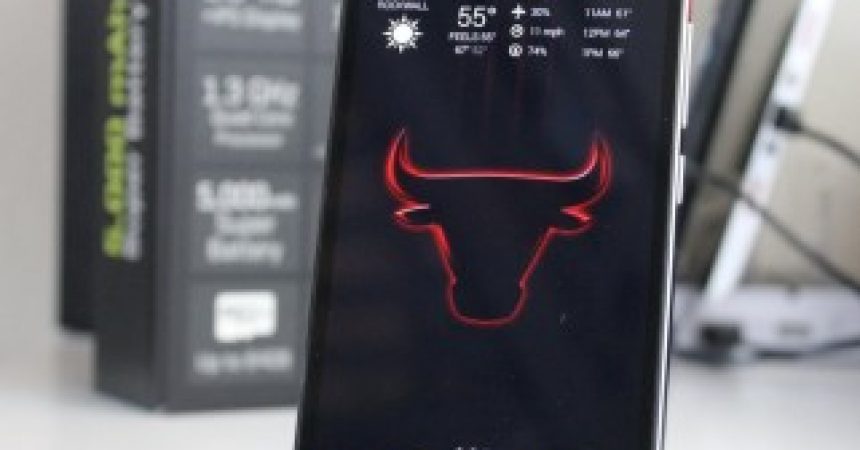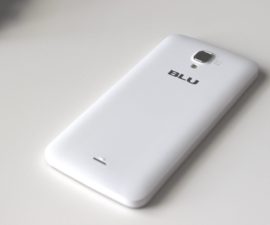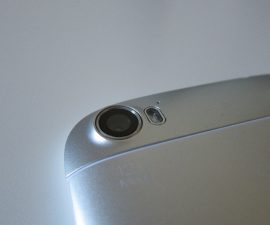The Blu Studio Energy
Blu recently revealed its new line of devices that is set for release in the first half of the year. Among this is the new addition to its Studio line called the Studio Energy, which is particularly noteworthy because of its 5,000mAh battery – which is about twice the usual battery in smartphones. This in itself is enough to pique our interest, even if Blu’s Studio line is just made up of midrange devices.
The specifications of the Studio Energy include a 5-inch 1280×720 display with Gorilla Glass 3 and utilizing the Blu Infinite View Technology; dimensions of 44.5 x 71.45 x 10.4mm and weighs 181 grams; a 1.3Ghz Mediatek MT6582 processor; Android 4.4.2 operating system; a 1gb RAM; an 8gb internal storage and a slot for a microSD card; 850/900/1800/1900 MHz GSM/GPRS/EDGE, 850/1700/1900 4G HSPA+ 21Mbps wireless capacity; an 8mp rear camera and a 2mp front camera; a 3.5mm headphone jack port; and last but not the least, a 5,000mAh battery. All for a price of $149.
Design and Build Quality
The design of Blu Studio Energy is pretty much like the other devices in the Studio line.
- Removable plastic back where the slots for the SIM cards and microSD card are found underneath. The back has a solid feel to it.
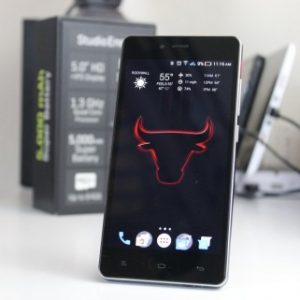
- Battery is not removable. A warning to not remove the battery is written in huge font.
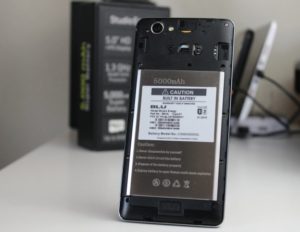
- Capacitive button layout – menu, home, back – are on the front; the headphone jack is on top while the microUSB port is at the bottom; and the volume ad power buttons are on the phone’s right side. The buttons feel stable.
- Phone is slim and has dual SIM capacity. On the down side, the phone is a bit heavy (because of the huge battery?)
Despite the plastic back and the fact that it’s from a midrange line, the Studio Energy feels almost premium, nonetheless. The build quality is excellent.
Display
The display, meanwhile, lacks any remarkable quality. It is still incomparable to the Super AMOLED panel found in Blue’s VivoAir despite the use of Blue’s Infinite View Technology which makes the display only slightly better. Viewing angles are shallow and colors are a bit pale.
Camera
The camera quality is okay for a $149 device, but it’s still not good enough for an 8mp specification. Color reproduction is washed out.
Performance
The Studio Energy’s software is almost as good as that of the Vivo Air’s, except that its use of Google Now does not seem to be apt for the phone. Long-pressing the home key opens the “recent apps” menu, whereas in the Vivo Air, long-pressing the home key reveals the Google Now. The phone does not provide quick access to Google Now.
The OS of Studio Energy is Android 4.4.2 (Kitkat) which will be upgraded to Lollipop in June 2015. That timeline is good because the current version of Lollipop is still not commendable even with a 2gb RAM, so hopefully by June, Lollipop has already been fixed.
The processor and RAM are okay and would work well for light usage, and considering the Studio Energy’s price, I think its performance does not disappoint. I can simultaneously open Google Maps and Google Music without a lot of lags. For heavy users, however – aka those who use a lot of third party apps as well as ready-to-use Android apps to the max (Bluetooth plus google music plus other high-memory apps) – interaction with the phone is nearly impossible, though it can keep all the apps running.
Battery
Blu’s claim is that the Studio Energy’s 5,000mAh battery can run for four days straight without a single charge. It’s an optimistic estimate, but even with heavy usage – six hours of screen-on time using the Internet (social media and e-mails), one hour Google Map navigation, one and a half hours GPS, and seven hours of music streaming via Bluetooth – the phone lasts for two days and six hours without charging.
The price for this huge battery capacity is a loooong charging time. Draining the battery to 5% and charging it for seven hours brings it to only 80%. However, this might be a problem with the charger. I tried using the Motorola Turbo Charger and the phone was fully charged in about five hours. It’s good that Blu provided a reverse-charging cable for the Energy, thus allowing it to charge other phones as well.
To sum it up:
The Blue Studio Energy is an awesome devices for light users such as those who only use their phones to check their e-mails and social networking sites, play games, text, and call. The phone’s battery would last well past two days with this kind of usage, so the device is very ideal for on-the-go people who like to have a device that will last a day without charging. But for power users, it’s not exactly a perfect fit, what with the lag time and all. A few points that Blue can improve:
- The quad-core processor could definitely do better, especially with multitasking.
- The phone’s 1gb RAM should also be upgraded to improve the device’s performance.
- Charger could improved to allow the phone to charge faster. A four-day standby time should not equate to a two-day charge time when the battery’s drained.
- The display. Definitely the display.
Considering to buy a Studio Energy or you already have one? Share your thoughts with us by commenting!
SC
[embedyt] https://www.youtube.com/watch?v=vyzV4EaJNu0[/embedyt]
